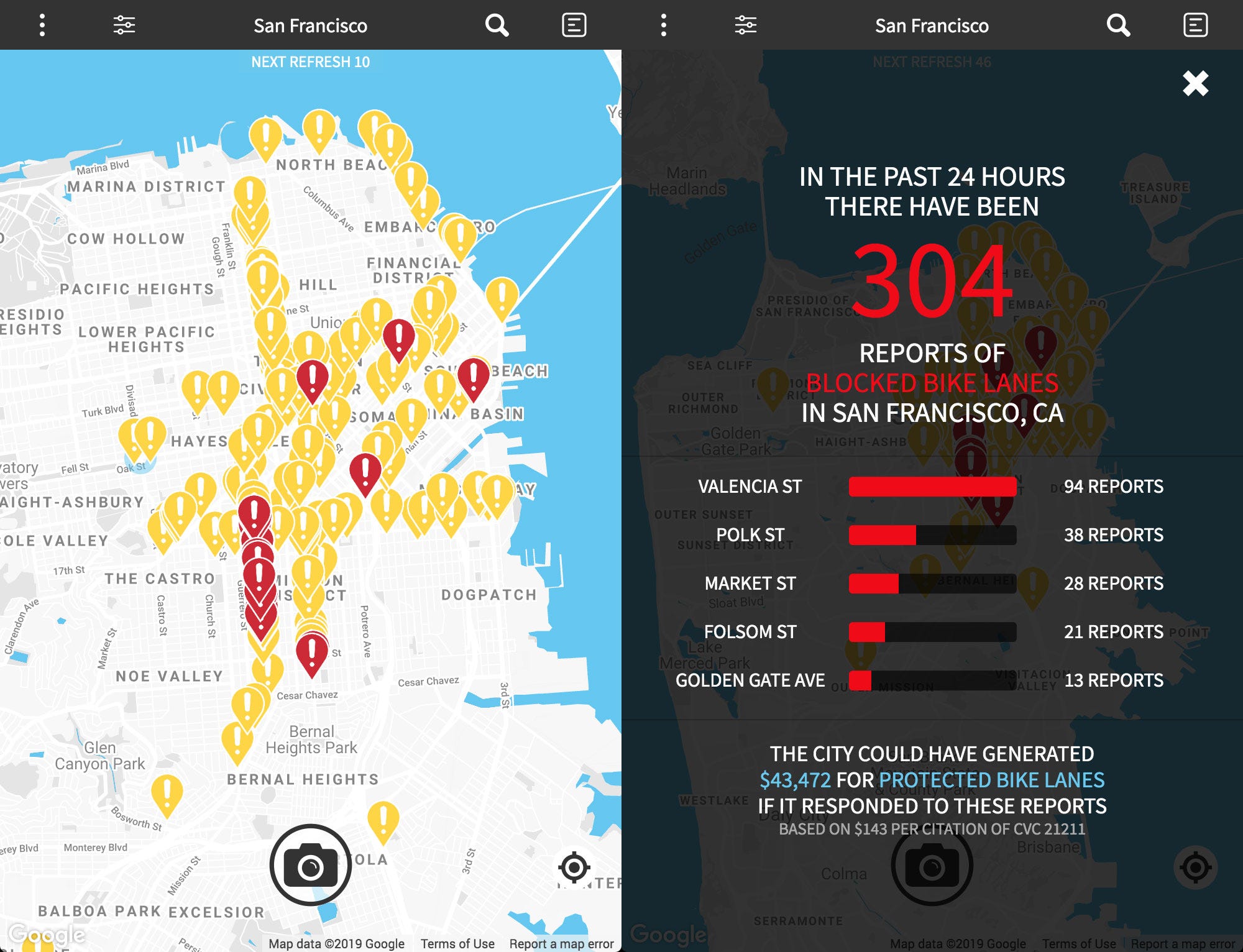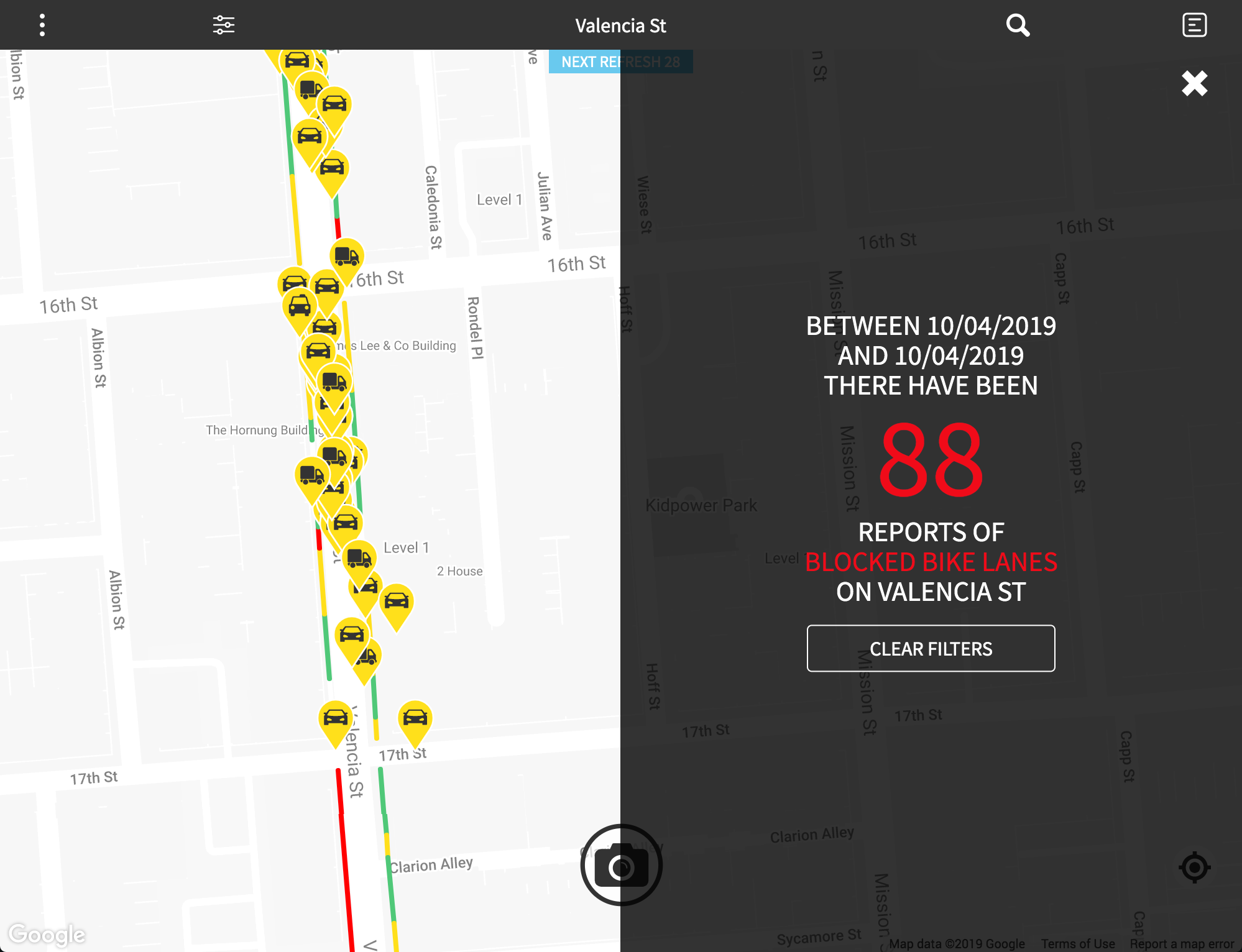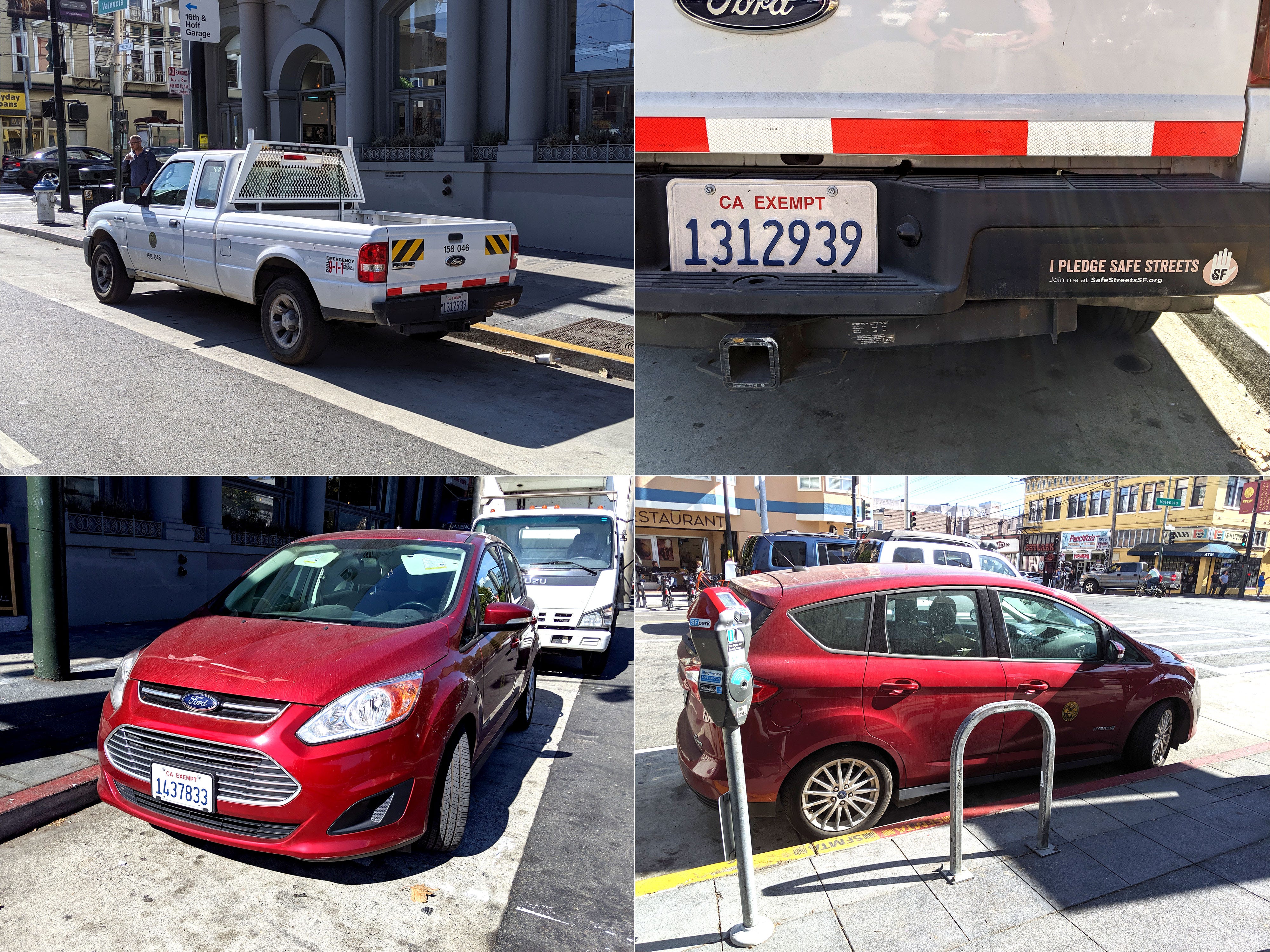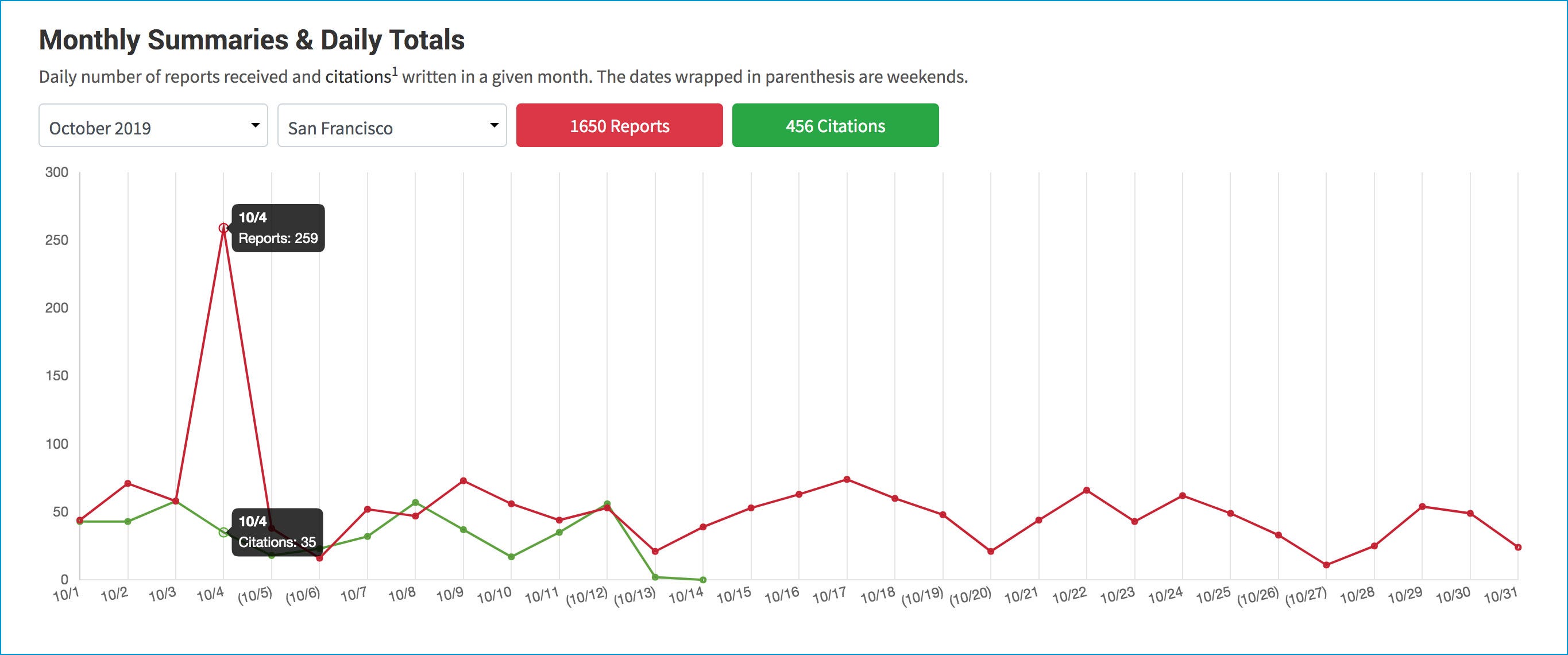Note: GJEL Accident Attorneys regularly sponsors coverage on Streetsblog San Francisco and Streetsblog California. Unless noted in the story, GJEL Accident Attorneys is not consulted for the content or editorial direction of the sponsored content.
Last month, Streetsblog covered an effort by advocates to log bike-lane violations throughout the city. Now that the data has been compiled and broken down, the organizer of the event, Stephen Braitsch, asked us to share his thoughts on what it all means for advocacy and city policy moving forward.
***
On October 4th I organized a day of action to conduct a point-in-time count of every blocked bike lane violation in the city of San Francisco. Over the course of about eight hours, approximately 80 volunteers and I documented 259 illegal parking violations using the Safe Lanes app I created.

Our goal was to not only show how dangerous it is to ride a bike on key commuter corridors like Valencia, Polk, Folsom and The Embarcadero but to identify where and when the most blocked bike lane violations are happening.
Of the 259 illegal parking violations we documented on October 4th, 88 of them or approximately 34 percent occurred within just a nine block stretch of Valencia St. between 15th and 24th streets. That’s right: one-in-three blocked bike lane violations recorded that day across the entire city occurred within just nine blocks of one street in San Francisco.

A breakdown of the 88 violations we recorded on Valencia shows that about one in three were delivery vehicles trying to service the popular retail corridor. The majority however were a mix of passenger drop offs and idling private vehicles.

Why are so many delivery vehicles blocking the bike lanes on Valencia? Surely one would assume that a popular retail corridor such as Valencia St. would have ample commercial loading space to accommodate the flurry of delivery vehicles that traverse it daily. Well on a couple of blocks it does, however many of the designated commercial and passenger loading spaces are so poorly maintained and under-enforced by the SFMTA that they have become completely overrun by private vehicles.

If you zoom in on this map you can see every violation we recorded on Valencia along with the type of curb that was adjacent to it. About half of the delivery trucks reported blocking the bike lane had a private vehicle parked in the adjacent commercial loading zone, the rest were simply too big to fit in the designated loading space.

A closer look at the loading zones along Valencia between 15th and 19th shows them to be so worn that it’s difficult to tell if they’re even still active. While photographing these curbs I spoke with seven different motorists who did not realize that they could not legally park their vehicles in these designated loading areas. Many complained that the metering system is confusing (San Francisco has three different types of parking meters) and cited a lack of easy-to-read signage to help them understand when and where they could park.

Additionally, by not maintaining these curbs, the SFMTA is sending a clear message to motorists that protecting loading zones is not a priority and that they should park wherever they please. Perhaps nothing more poignantly underscores that fact than two city employees parked in one of Valencia St.’s most prominent commercial loading zones at 16th St.

Alas however, all hope is not lost. There is one diamond in the rough, the recently painted passenger loading zone at Valencia and 18th St.

Since April I have been tracking blocked bike lane violations and citations throughout San Francisco. My goal has been to try to help the SFMTA optimize their enforcement strategy based on when and where we know the most violations are happening. To date there is no indication that the SFMTA is utilizing the data I am providing them as Valencia St., especially during the evening rush hour, continues to be the single most dangerous commuter corridor for cyclists and micro mobility riders in San Francisco. In fact on the day of our action which was well socialized on social media the SFMTA wrote a mere 35 citations for blocking the bike lane citywide.

In addition to inadequate enforcement of CVC 21211 along Valencia, there also appears to be very little enforcement of TRV 7.2.25/26/27 e.g. blocking a commercial or passenger loading zone. I’ve requested data from the SFMTA on these violations and am currently waiting to hear back
The fact is our data shows that Valencia St., Folsom, Polk, Howard, Market, Golden Gate Ave and The Embarcadero are priority commuter corridors that consistently have vehicles blocking their unprotected bike lanes. Citing vehicles for illegal parking is a necessary, short-term solution but each of these corridors desperately need fully protected bike lanes their entire length as soon as possible to protect the thousands of people who cycle, scoot and skate along them daily.
In the meantime, we will continue to collect and publish data that can help the City of San Francisco fix these dangerous streets as quickly as possible.
Stephen Braitsch is a designer, engineer and safe streets activist who created Safe Lanes after Tess Rothstein was crushed to death while riding her bike in an unprotected bike lane on San Francisco’s Howard St. in March of 2019. Frustrated by The City’s reactionary response to preventable deaths on our city streets, Safe Lanes was created to track illegal and dangerous driving on known high injury corridors to help San Francisco proactively design safer infrastructure and enforce its illegal parking laws.





